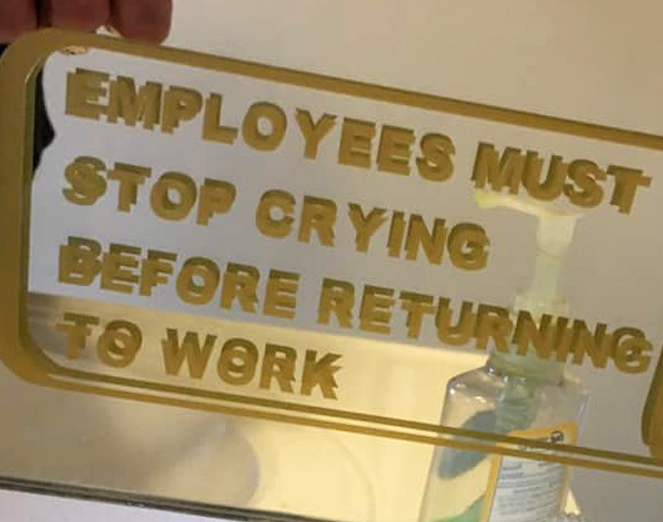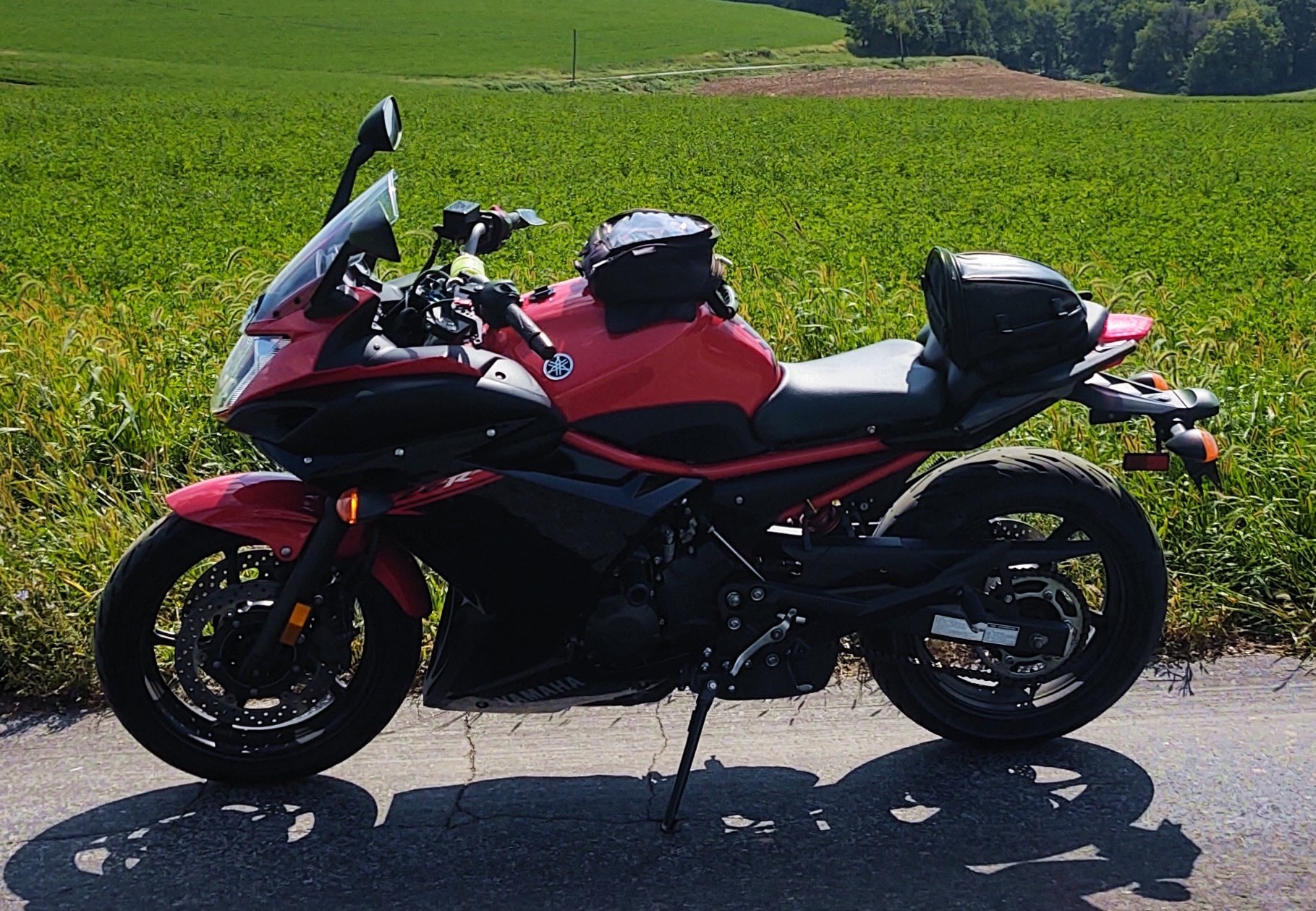I bought a pack of 12 neck gaiters from Goodwill for like three dollars. Soak in water, wear around neck, works a treat.
Nougat
- 3 Posts
- 128 Comments

 44·16 hours ago
44·16 hours agoOne man’s extortion is another man’s bribery.

 117·17 hours ago
117·17 hours agoIf the notion of inclusion is “political” that must mean that the notion of exclusion is the “political” positon that is being protected here.
Not today, FBI.

 101·20 hours ago
101·20 hours agoI just unloaded most of my defense ammo in preparation for going to the range tonight.

 361·20 hours ago
361·20 hours agoOf course they learned something! That they can do that.
Once you’re moving faster than, say, 10MPH, whatever speed you’re going is fast enough to kill you or make you a drooling idiot when your head bangs on something hard and motionless. Beyond that, adding speed just decreases the chances of drooling idiot.
Full disclosure, I have ridden without a helmet. Not often, but I probably will again. I have a pair of goggles for the eyes. I much prefer the comfort and safety of having a helmet on, but –
Briefly riding around quiet neighborhood streets by me, that I know well enough to know which houses have little kids, during the day, on the little scooter, … maybe. After a long time on big interstates on the big bike, when the helmet has been pressing into my forehead too long, also during the day, flat rural interstate, light “traffic”, excellent visibility, highways I am pretty familiar with? Maybe.
And the whole time I would be thinking “I shouldn’t be doing this.” My current helmet is much more comfortable than my last one, and I don’t need to wear earplugs with it unless I’m doing a long ride at 70+ MPH. Putting it on is easy, easier than having to listen to that voice in my head saying I should have put it on, I have music in it, I’m having a hard time now thinking of a situation where I wouldn’t want it on.
Thank you, and you’re more than welcome to do so.

 4·21 hours ago
4·21 hours agoDefinitely - there are lots of reasons why abortion needs to be legal; I was only running down one avenue.
You’ll hear people say “all the gear all the time” (ATGATT), but I feel like equating things like helmets and airbags with gloves and jackets and pants is misleading. I mention the earplugs because while they won’t do anything in a crash, you will fuck up your ears without them.
You’ll also hear people say (mainly about helmets), “Get the most expensive helmet you can afford. Is your head only worth $150?” This is also misleading. Look for ECE rated helmets. DOT-only rated is “ehhh.” Snell rating is out there, too, but helmets with those tend to be really expensive, and their ratings are comparable to ECE. (ECE is arguably a better standard, anyway.)
The most important thing about a helmet is fit. It should be snug, should pull your face around when you move it, without slipping. It should be comfortable for you to wear for long periods of time. Different manufacturers make different shell sizes and shapes for different helmets and their size designations. If you buy an expensive helmet that doesn’t fit you well, you won’t want to wear it. Retail price is not the way to decide what helmet to buy. Sure, you can spend $1000 on a Shoei helmet, and they’re good helmets, but you’re also paying for the branding, and you’re still going to need to replace it in three to five years.
Personally, I ride with an HJC modular helmet. Quite comfortable for me, HJC is a known brand (not some weird Amazon/China fake DOT sticker thing), and it was … wait for it … $150. I have a jacket and gloves, but I don’t wear them very often. If future me slides, he probably won’t die, but he’ll suffer immensely. I don’t like that guy anyway.
Okay, let’s talk about gear.
Helmets keep you alive. If you’re not wearing a helmet with a chin bar (full or modular), you don’t care about your face. On such a helmet, the face shield keeps shit out of your eyes and noise out of your ears. If your helmet does not mitigate wind noise very well, you should be wearing earplugs. Tinnitus is no joke. I like the ones with the little plastic filter in them, but even cheap disposable foam ones are better than nothing, and yes, you will still be able to hear traffic noises just fine.
You’ll want to replace your helmet every three to five years, because the foam inside degrades and loses its ability to absorb impact. If you accidentally drop your empty helmet on the ground, it’s fine; if the helmet hits the ground with your head in it, it’s time for a new one.
Airbag vests are great and offer protection from organ damage due to impact. You like your organs. I believe there are also helmets that have neck airbags in them to keep your head from snapping around and breaking your neck.
The rest of the gear is to reduce injury. You won’t die without it, but you will hurt. Maybe a lot.
Gloves, pants, jacket all prevent abrasions. Tall boots with proper stiffening also keep your ankles from getting broken. The armor pads are designed to protect the areas of your body that are most likely to skid against the ground: knuckles, palms, knees, butt, elbows, back. All of this gear doesn’t have to be replaced on any time schedule, or if you slide in it, but you can easily determine whether it’s damaged enough to need replacing. Armor pads are normally removable in jackets and pants.
Thank you for coming to my TED Talk.

 17·22 hours ago
17·22 hours agoYou’re not wrong, but if the law says “legal until viable”, then that physician’s decision must be reviewable in court. Which means that no physician is going to sign off on “not viable” and put themselves at legal risk.
This is why the law should just say “legal”, full stop. (e: I just realized that you also used the phrase “full stop.” I promise I was not trying to be snarky, it just came out.)

 5·22 hours ago
5·22 hours agoI skipped to the last two words of your comment months ago.

 48·23 hours ago
48·23 hours ago“Viability” can even be quite fuzzy, because it all depends on the capabilities of medical science, and even then there’s a gray area. And who gets to decide whether a fetus that tests for a given birth defect is “viable”? Does “viable” mean that the fetus can be forced to have a heartbeat outside of the womb, even if they have to be cared for in a vegetative state forever?

 5·1 day ago
5·1 day agoIt’s been optional since 1943. Teachers don’t know that, of course, and they’re gonna swing dick about it if you resist, but the law is on your side.
https://en.wikipedia.org/wiki/West_Virginia_State_Board_of_Education_v._Barnette
Except they kind of didn’t. When books were handwritten by scribes, every scribe used their own local variation of spelling to suit the wealthy buyer who had commissioned them. Later, it was in the best interest of typesetters for books to be readable by the most number of (wealthy literate) people, because they were creating more books on spec to be printed first and bought later, instead of creating each one bespoke for the buyer.
But … then as now, there were all sorts of different dialects of English across Britain. People in the north pronounced things differently from people in Wales, Cornwall, London, etc. This was even a known problem at the time: what spelling to use when your book had to be saleable across so many different pronounciations? A lot of it was kind of an arbitrary choice, with most of the spellings matching London speech, and some matching northern speech.
I have to imagine that even at the time, there were people who read available books and wondered “Why did they spell it like that?” It’s because printing made books “global” in a language and spelling landscape which was very “local”.
I knew it was a quote from somewhere, I just didn’t care. ;)




As long as there’s not a head-shaped mass inside the helmet when it bounces on the garage floor, the foam will be undamaged.
You’re right about the ear plugs, though. The only reason I know my current helmet is soundproof enough for me is because I have had several which were not.